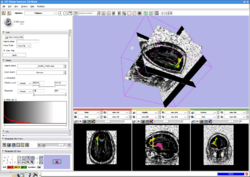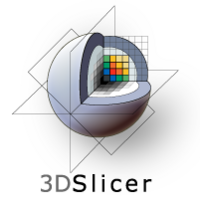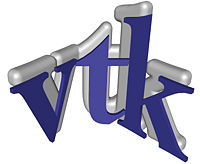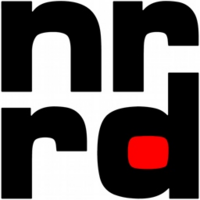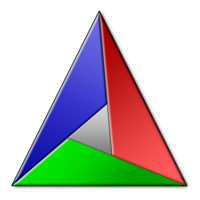Difference between revisions of "NA-MIC-Kit"
| Line 102: | Line 102: | ||
[http://www.cmake.org CMake] is used to control the software build process using simple platform, compiler and operating system independent configuration files. CMake generates native makefiles and workspaces that can be used in the development environment of your choice. That is, CMake does not attempt to replace standard development tools such as compilers and debuggers, rather it produces build files and other development resources that can benefit from automated generation. Further, once CMake configuration files are created, they can be used to produce developer resources across the many platforms that CMake supports. CMake is quite sophisticated: it is possible to support complex environments requiring system configuration, pre-processor generation, code generation, and template instantiation. [http://wiki.na-mic.org/Wiki/index.php/CmakeSummary More...] | [http://www.cmake.org CMake] is used to control the software build process using simple platform, compiler and operating system independent configuration files. CMake generates native makefiles and workspaces that can be used in the development environment of your choice. That is, CMake does not attempt to replace standard development tools such as compilers and debuggers, rather it produces build files and other development resources that can benefit from automated generation. Further, once CMake configuration files are created, they can be used to produce developer resources across the many platforms that CMake supports. CMake is quite sophisticated: it is possible to support complex environments requiring system configuration, pre-processor generation, code generation, and template instantiation. [http://wiki.na-mic.org/Wiki/index.php/CmakeSummary More...] | ||
| − | <font color="red">'''New: '''</font> CMake has been adopted by KDE, one of the world's largest open source software systems. | + | <font color="red">'''New: '''</font> [http://lwn.net/Articles/188693/ CMake has been adopted by KDE], one of the world's largest open source software systems. |
|- | |- | ||
Revision as of 12:51, 4 October 2007
Home < NA-MIC-Kit
| |||||
Contents
Overview
The NA-MIC Kit consists of open source software with application in biomedical computing. This software has been and continues to be produced by the NA-MIC team as part of an NIH National Center for Biomedical Computing program. The software is distributed under a BSD-style, open source license free of commercial and reciprocal distribution restrictions. See this presentation on the NA-MIC Kit for more information.
Target Audience
The NA-MIC Kit has been created to support a spectrum of users and developers. This includes:
- biomedical researchers
- algorithms developers
- application developers
- software toolkit developers and users; and
- software process tools including support for building, testing, community building and software management.
The NA-MIC Kit has also been employed by users wishing to perform image analysis and visualization tasks. For example, the Slicer application is being used at | Harvard's IIC for astrophysics research. Other tools, such as CMake, are in wide use around the world in projects as disparate as KDE, one of the world's open source software projects distributed as the Linux desktop windowing environment.
Software Overview
Depending on user needs, users of the NAMIC Kit will use the following software tools. More information about each tool is available below.
- 3D Slicer is a general purpose application. Biomedical researchers will typically use this software tool to load, view, analyze, process and save data.
- Slicer modules, which are dynamically loaded by Slicer at run-time, can be used to extend Slicer's core functionality including defining graphical user interfaces. Modules are typically used by algorithms and application developers.
- Application and algorithms developers may also use NA-MIC Kit toolkits and libraries. For example, the Insight Segmentation and Registration Toolkit ITK can be used to develop slicer modules for medical image analysis. The Visualization Toolkit can be used to process and visualize data. KWWidgets is a 2D graphical user interface toolset that can be used to build applications. Teem is a library of general purpose command-line tools that are useful for processing data. Finally, those individuals wishing to create
Download Central
Please go here to download software, documentation and data.
Software Packages
Go to NA-MIC-Kit-Old to see the previous NA-MIC Kit web pages.
3D Slicer3D Slicer is a software package for visualization and medical image computing. A tutorial for prospective users of the program can be found on the web. See our tutorials page for an introduction to the use of 3D Slicer. More...
| |
The Visualization Toolkit VTKThe Visualization Toolkit is an object-oriented toolkit for processing, viewing and interacting with a variety of data forms including images, volumes, polygonal data, and simulation datasets such as meshes, structured grids, and hierarchical multi-resolution forms. It also supports large-scale data processing and rendering. More...
| |
The Insight Toolkit ITKThe Insight Segmentation and Registration Toolkit (ITK) is an open-source software toolkit for performing registration and segmentation. Segmentation is the process of identifying and classifying data found in digitally sampled representations. Typically the sampled representation is an image acquired from such medical instrumentation as CT or MRI scanners. Registration is the task of aligning or developing correspondences between data. For example, in the medical environment, a CT scan may be registered with a MRI scan in order to combine the information contained in both. More... New: ITK Version 3.4 has been announced. | |
KWKidgets GUI ToolkitKWWidgets is an Open Source library of GUI classes based on Tcl/Tk with a C++ API. This library was originally developed by Kitware for ParaView, and now has been extended in functionality and architecture thanks to NAMIC support. More... | |
Teem Command Line ToolsTeem is a coordinated group of libraries for representing, processing, and visualizing scientific raster data. Teem includes command-line tools that permit the library functions to be quickly applied to files and streams, without having to write any code. More...
| |
CMake The Cross-platform Make ToolCMake is used to control the software build process using simple platform, compiler and operating system independent configuration files. CMake generates native makefiles and workspaces that can be used in the development environment of your choice. That is, CMake does not attempt to replace standard development tools such as compilers and debuggers, rather it produces build files and other development resources that can benefit from automated generation. Further, once CMake configuration files are created, they can be used to produce developer resources across the many platforms that CMake supports. CMake is quite sophisticated: it is possible to support complex environments requiring system configuration, pre-processor generation, code generation, and template instantiation. More... New: CMake has been adopted by KDE, one of the world's largest open source software systems. |
